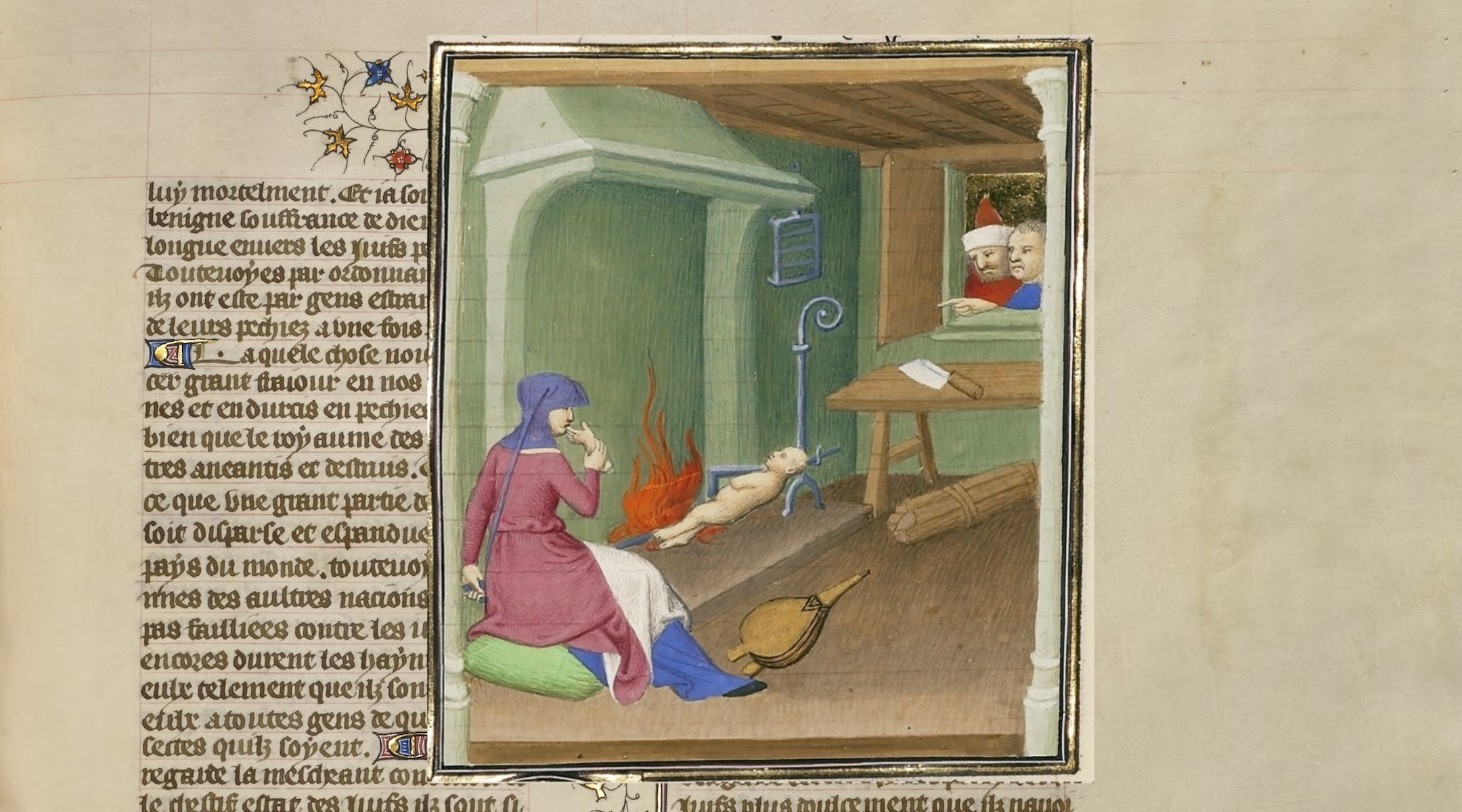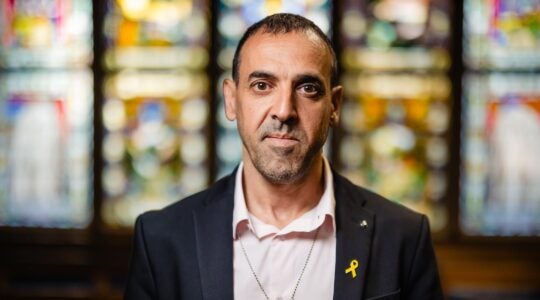In his historical account of the Roman siege of Jerusalem, Josephus describes how the Jews slowly succumbed to starvation.
At the beginning of the siege, the Jewish faction known as the Zealots burned the grain reserves that had been stored to feed the people, hoping to force them into fighting the Romans. What little food remained in the city was often stolen by the Zealots to feed themselves. The Zealots, of course, are the clear villains of the account by Josephus, who writes sympathetically of the Romans. Though it is the Romans who will eventually destroy the Temple, in his account it is the Zealots’ barbarous cruelty that dooms the Jews.
One poor woman, Mary, finds herself unable to feed her young infant, and when finally pushed to her limit, she does the unthinkable. Rather than allow her child to die of starvation or grow up to become a Roman slave, she kills him, roasts him and eats half. When the Zealots return to steal her food, she shows them what remains of the child and says, “Come, eat of this food: for I have eaten of it myself.” Shocked by what they had witnessed, they staggered out of her home. As word spread across the city, all Jews trembled.
The Zealots depicted by Josephus were not simply a tragic footnote to Jewish history. They were fanatics who torched food supplies, murdered fellow Jews and sealed the city’s fate by provoking a hopeless war. The people of Jerusalem were besieged on two fronts: from without by Rome, and from within by those who claimed to act in the name of Jewish liberation.
In this, the Zealots bear an uncanny resemblance to Hamas. Like the Zealots, Hamas has imposed its violent ideology on the people it claims to represent, sowing death and destruction with no regard for the human cost. It invited catastrophe, and it has come. Josephus’s words about the Zealots serve as a fitting description of Hamas: “They followed every bad example, and there was no crime in the records that they did not zealously reproduce.”
But Josephus’ account does not let us rest in the comfort of moral clarity. To compare the Zealots to Hamas is also to invite another comparison, that between the Romans and modern-day Israel. Though the Romans could have tried to take the city by force, they deemed siege more effective. By starving the inhabitants, they hoped to break their will and force them to submit without risking the lives of many Roman soldiers.
Eventually, they too heard about Mary and her actions. In many ways, their response to the news mirrors what we see today in reaction to the images of starving children in Gaza. Many Roman soldiers dismissed the story, assuming it was the kind of wild rumor that circulates in wartime. A smaller number felt pity for the Jews and their suffering.
When Titus, the Roman general in charge of the campaign, heard about it, his reaction differed from his troops. Appearing to sense that the horrors taking place in Jerusalem might lie, at least in part, at his feet, he swore an oath that he was not at fault. He had made clear to the Jews, he insisted, that if they were to surrender, they would live in peace. But instead, they chose violence and war. They were the ones, he declared, who brought famine down upon themselves. “They,” he said, “with their own hands had begun to burn down the Temple.”
Those who support Israel’s siege of Gaza have no choice but to identify with Titus’s words. Rather than see themselves as responsible for the horrific images and stories emerging from there, they must comfort themselves with the belief that it is all Hamas’s fault: Israel has given Hamas no end of opportunities to end the war, and yet they persist, holding onto the hostages and rejecting the terms of negotiations.
With Tisha B’Av approaching, a day that commemorates the Temple’s destruction by the Romans, it is important to remember that it is not a time for explanations or justifications. It is a day for letting the enormity of suffering and destruction break through our defenses. If we do not allow ourselves to feel their weight, we will have learned little from the churban, the destruction of the Temple.
The danger of Tisha B’Av is that it can trap us in the past. We sit on the floor. We read Lamentations and imagine ourselves powerless, ever the victims of dark forces beyond our control. But this year, we are not the ones under siege. We may console ourselves by saying we are not Rome but neither are we entirely innocent.
Tisha B’Av is not the end of the Jewish story. But it is the moment when the Jewish story confronts its own collapse, when we discover that there are no easy answers for the horrors we have faced in our history and still face today. If we allow ourselves to look — truly look — at the ruins, we may tremble as they once did in Jerusalem, not in fear, but to be spurred to action. In doing so, we may yet find a way forward, not only for ourselves, but also for those whose cries we have not yet answered.
JTA has documented Jewish history in real-time for over a century. Keep our journalism strong by joining us in supporting independent, award-winning reporting.







